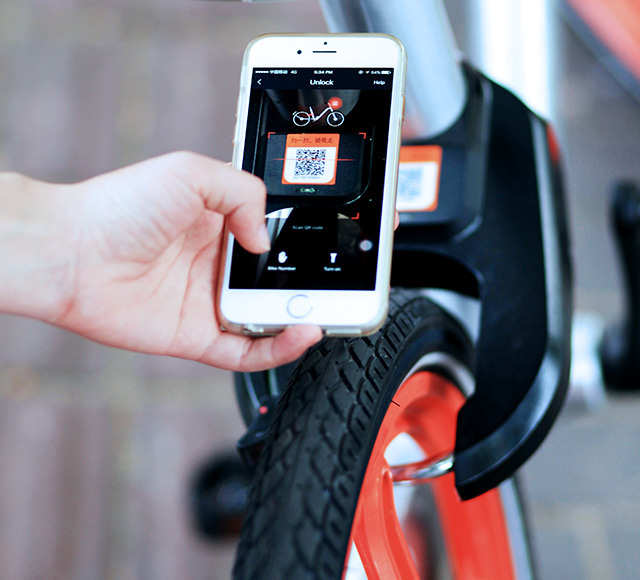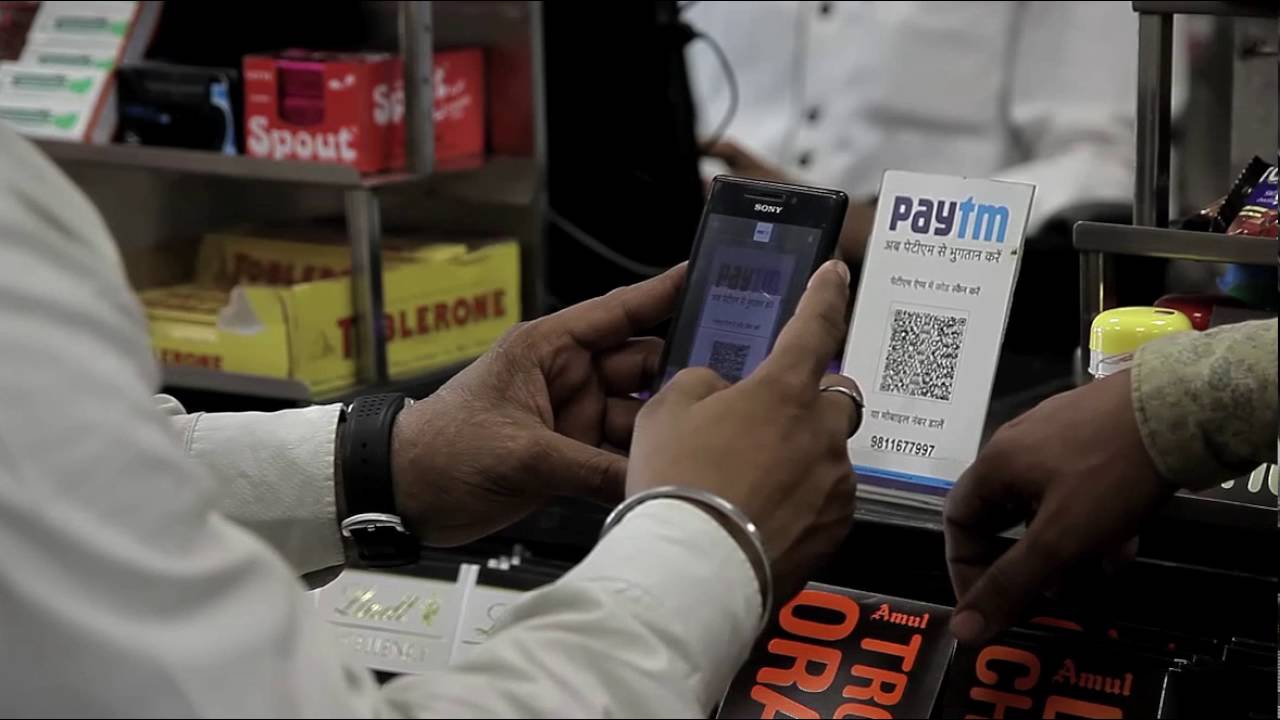AUDI Drive Experience
Creating a seamless personalised drive experience
Concept collaboration with AUDI to create a seamless QR code login experience across different devices
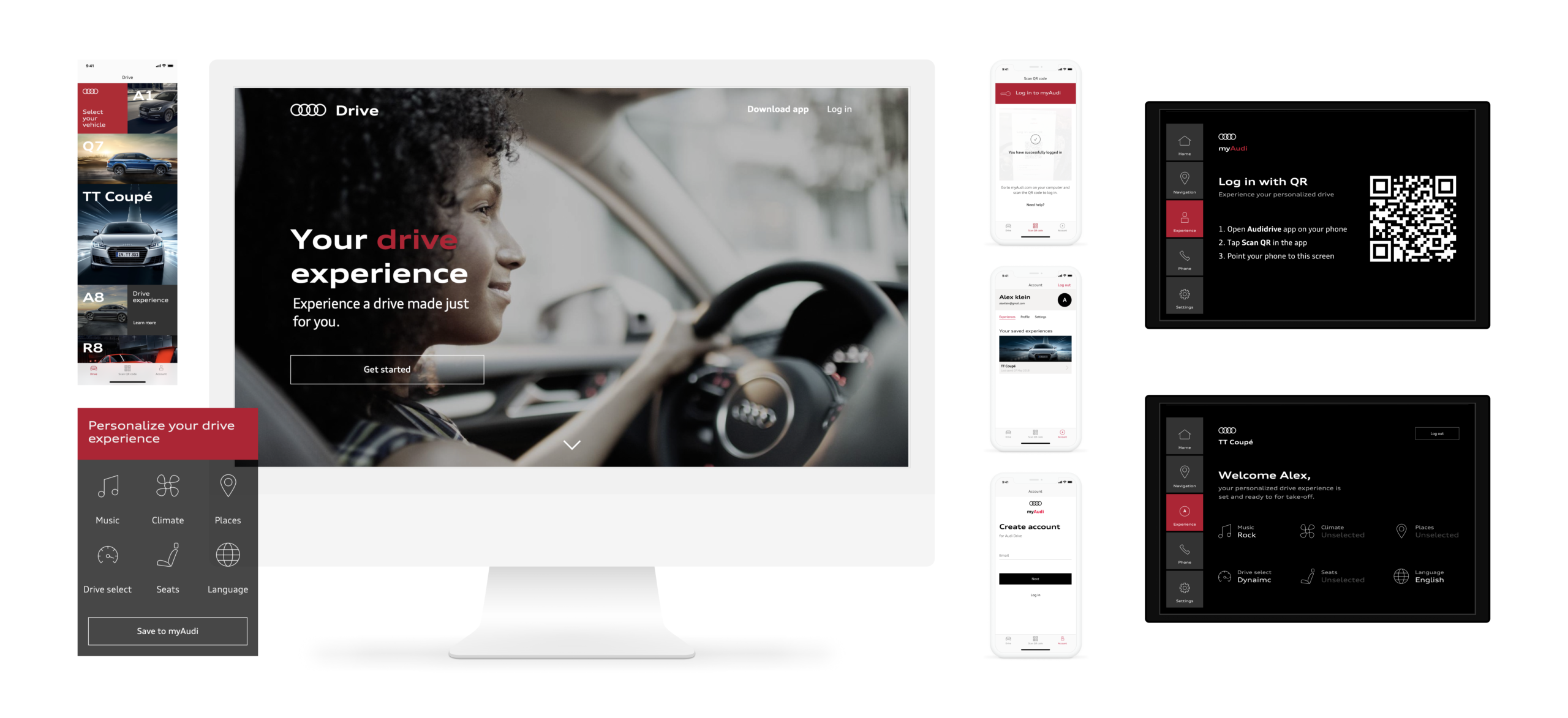
Context
The AUDI Drive Experience delivers immersive driving enjoyment. However, its existing identity management system was fragmented, resulting in disjointed user experiences. Users faced the tedious task of logging into different device. The overall experience felt like managing multiple accounts, and the use of an email-password combo for logging into the car's infotainment system was a chore.
Our aim was to create a seamless login experience across different devices. We hypothesized that employing a QR code as a login solution would offer users a quicker, easier, and more integrated experience across various devices.
Duration & Team
2018 – 4 weeks
1 Product Manager, 1 Designer
My Role
I jumped on the opportunity immediately when was asked to lead this 4 weeks design sprint. I researched, designed the interfaces and prototypes, and facilitated the interviews and user tests.
Discover
We began the discovery phase by conducting stakeholder interviews to comprehend their perspectives, followed by an in-depth exploration into the use of QR codes.
Stakeholder Interviews · Research
Output Defined
Following our stakeholder interviews, we realized our focus would be squarely on one primary deliverable: facilitating QR code login across multiple devices. Thus, our research concentrated on evaluating the practicality and user acceptance of QR codes for an integrated login experience. In-depth competitor analysis further informed us about industry trends and similar problem-solving strategies.
Define
I crafted a user journey map to visualize the login process using QR codes across multiple devices. This process helped us define the problem better: How might we use a QR code as a login solution to simplify the process, while maintaining a consistent user experience?
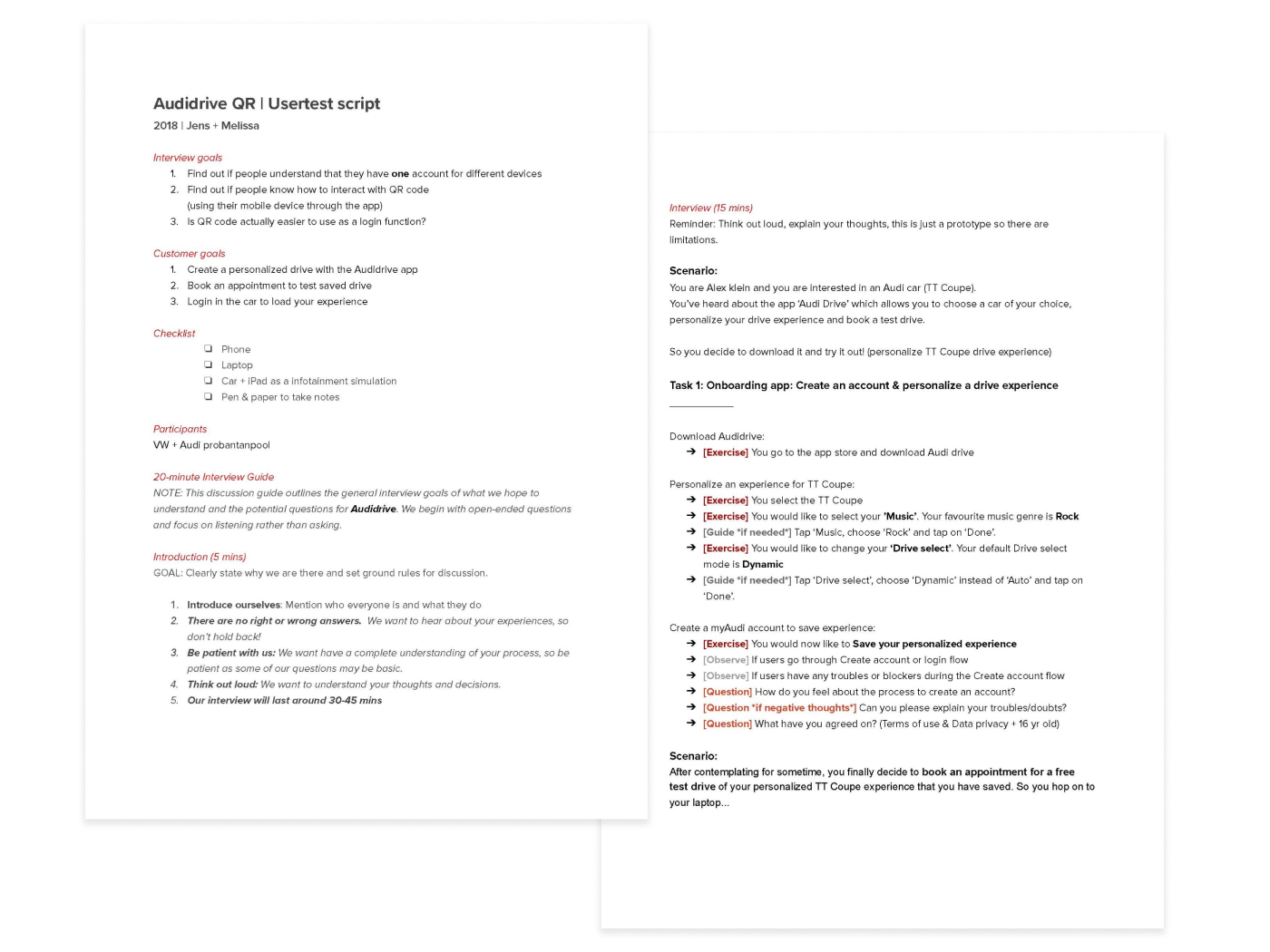
Testing Script · Assumptions to Validate
Preparation for Usertesting
A detailed Test Script was also written to guide the user testing process and validate key assumptions. The test's goals were to verify if users could comprehend the notion of a unified account, if they were comfortable interacting with QR codes, and if they found it to be a user-friendly login method.
Develop
To ensure our solutions resonated with real-world users, we recruited participants through TestingTime for on-site user testing. Our diverse group consisted of mixed genders, aged between 20 to 60, residing in Germany, and owning a smartphone but not from the IT department.
Wireframe · UI · Prototype
From Conceptualization to
High-fidelity Prototype
In the initial stages of the design process, I started by putting pen to paper, sketching out the user flow based on the user testing script and associated tasks. The subsequent User Interface was designed in Sketch aligning with AUDI's brand guidelines, ensuring a consistent and visually engaging user experience. It was then dynamically prototyped in Flinto, effectively bridging the gap between our conceptual models and tangible user interactions.
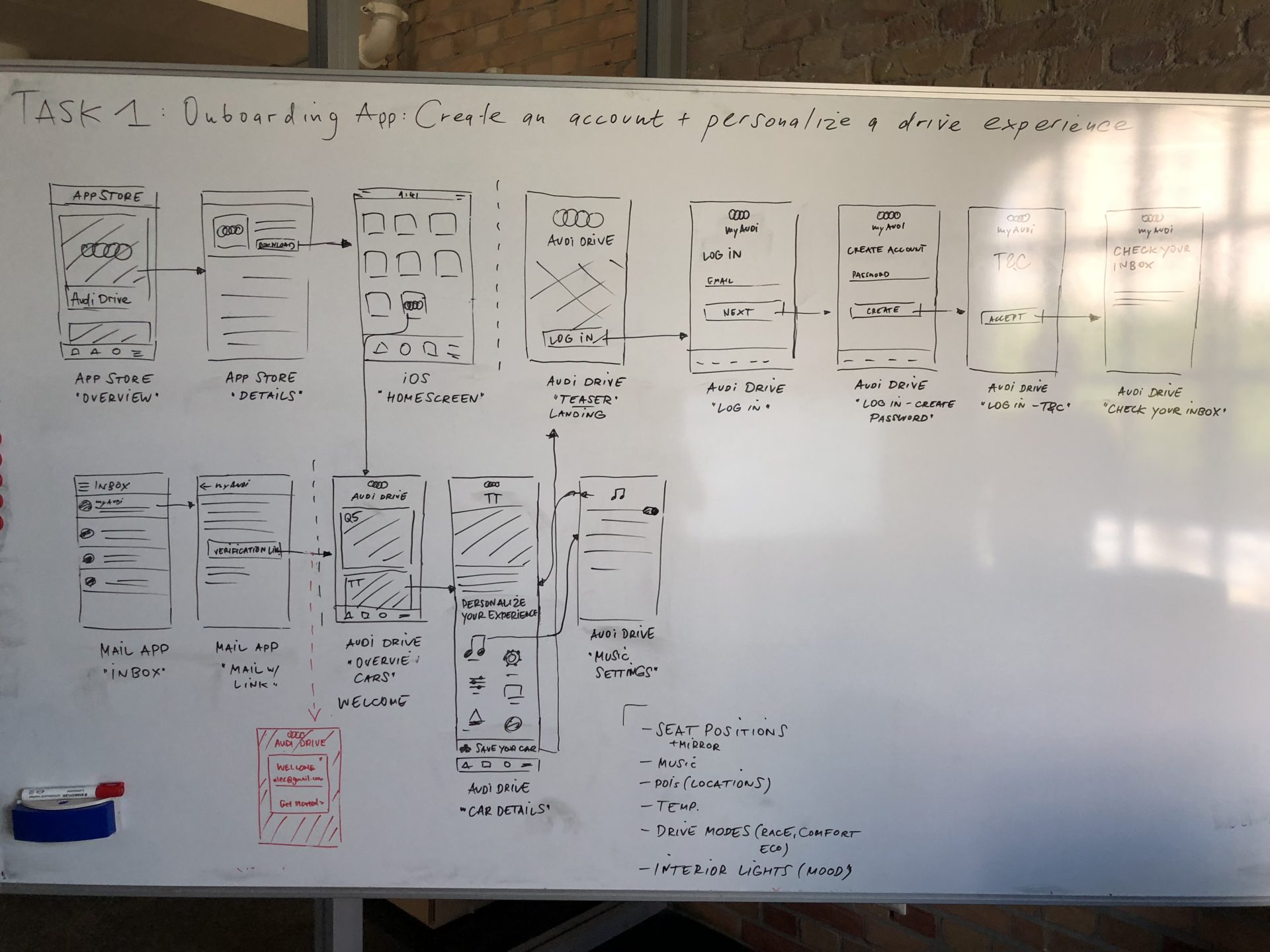
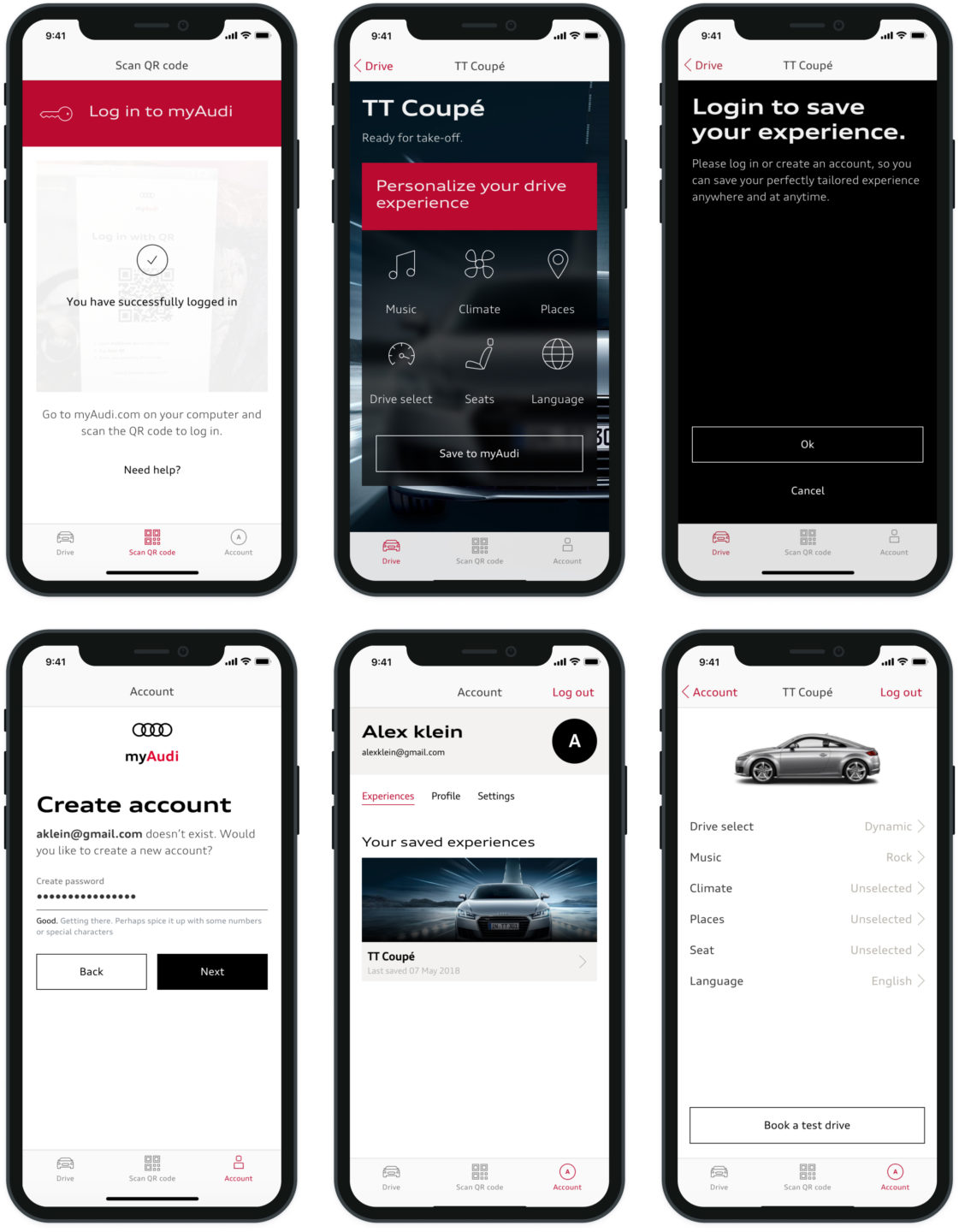
Deliver
Synthesizing the results of the user tests, we meticulously organized the findings and effectively concluded the 4-week design sprint, ultimately handing over a comprehensive project summary to AUDI.
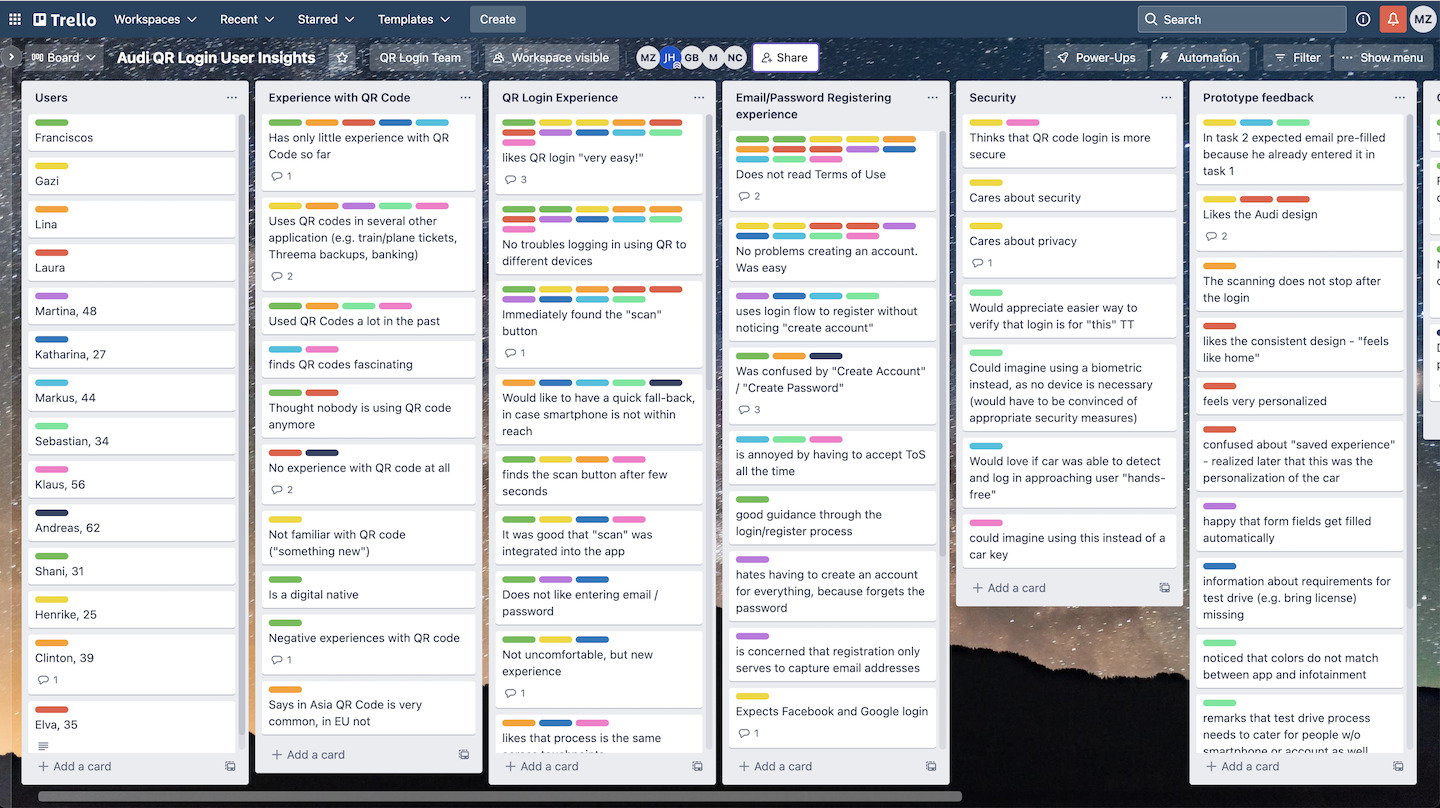
Reflections
What have I learnt
☞ Learning through implementation
Adopting a different approach to meet requirements and constraints doesn't equate to an incorrect approach. Testing the concept enabled rapid learning and insights.
☞ Flinto mastery
While InVision is my go-to for rapid prototyping, this project pushed my skills in Flinto as I needed to deliver a high-fidelity prototype to AUDI.
What would I have done differently
☞ Exploring alternative to QR codes
Although I enjoyed crafting the UI and prototype, in retrospect, I would have advocated for a deeper exploration of alternative solutions and focused more on the desired outcome rather than the specific output.

